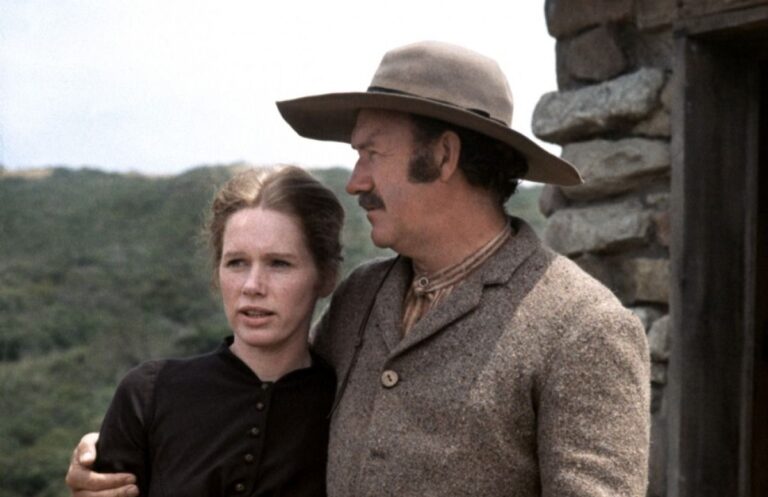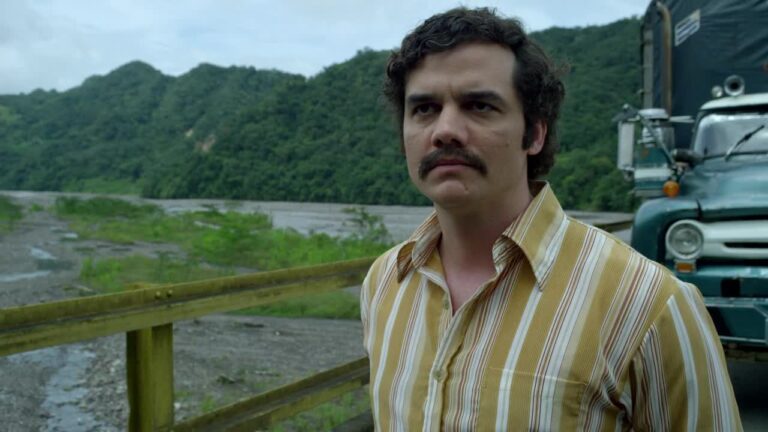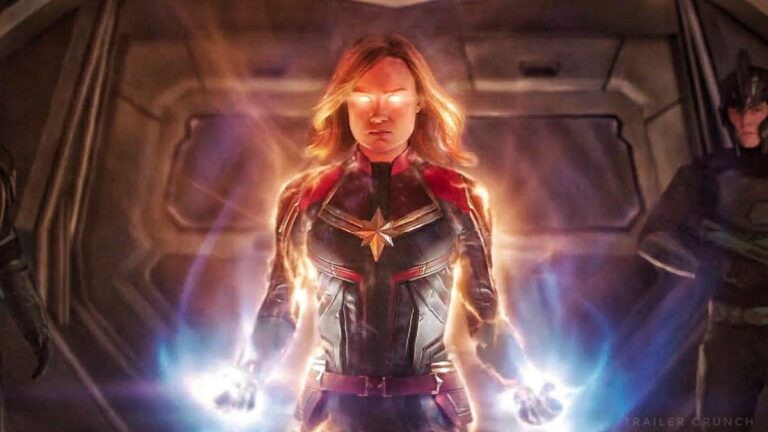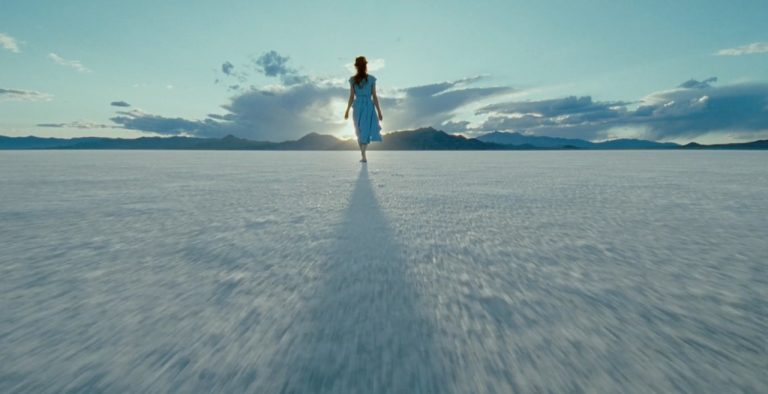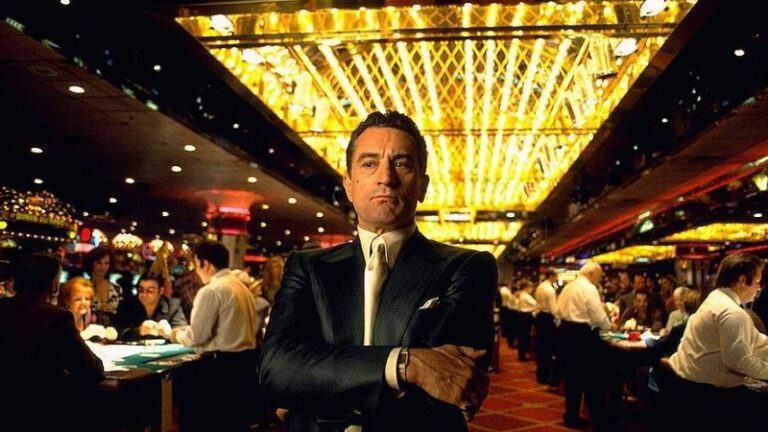Movies That Start With E: Alphabetical Adventures in Cinema
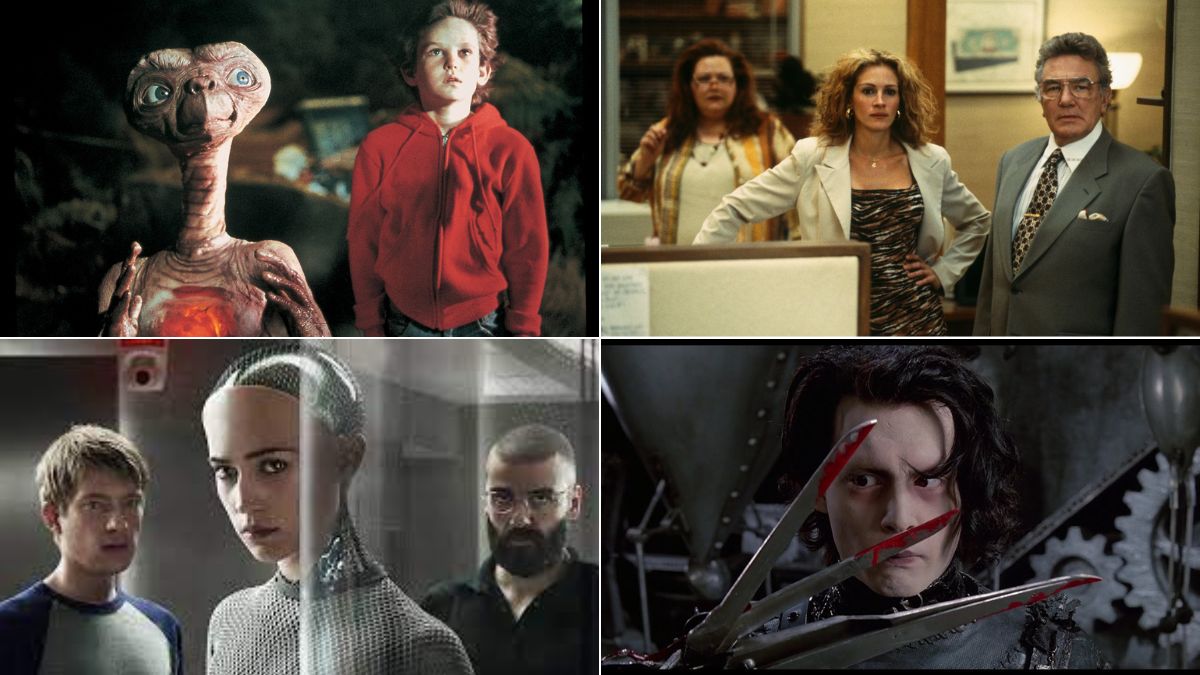
Diving deep into the vast sea of cinema, every title holds its own charm, transporting viewers to diverse realms of storytelling. As we embark on our alphabetical journey, the letter “E” emerges on the horizon, promising enchanting tales, evocative emotions, and epic adventures. Join us as we explore movies that start with the letter “E,” showcasing the eclectic range of cinema that this letter has to offer.
E.T. the Extra-Terrestrial (1982)
Steven Spielberg’s “E.T. the Extra-Terrestrial” stands as a monumental achievement in the realm of family films. Released in 1982, it weaves the tale of a gentle alien accidentally left behind on Earth, who forms an unlikely friendship with a young boy named Elliott.
E.T.’s vulnerability and longing to return home resonate deeply with the universal themes of loneliness, friendship, and the challenge of understanding those different from oneself. Spielberg’s masterful direction combines with John Williams’ evocative score to produce a movie that can elicit tears and joy in equal measure.
The impact of “E.T. the Extra-Terrestrial” transcends its immediate cinematic experience. The iconic image of Elliott and E.T. flying across the moon on a bicycle is etched in the collective memory of audiences worldwide. The film delves into the innocence of childhood, the bond that can form between species, and the lengths one would go to protect a friend.
Not only did the film achieve monumental box office success, but it also fortified Spielberg’s reputation as a director who could touch hearts, bridging the gap between commercial cinema and deep emotional storytelling.
Edward Scissorhands (1990)
Tim Burton’s “Edward Scissorhands” offers a gothic fairy tale that beautifully blends whimsy with profound social commentary. The 1990 film introduces viewers to Edward, a creation of an old Inventor, who tragically passes away, leaving Edward incomplete with scissors for hands.
This peculiar protagonist, played brilliantly by Johnny Depp, finds himself navigating the curious world of suburbia after being discovered by a kind saleswoman.
The film doesn’t merely present a visual spectacle but delves deep into themes of acceptance, love, and the terrifying nature of mob mentality. With Winona Ryder playing the love interest, their relationship becomes a symbolic representation of the age-old tension between conformity and individuality.
Burton’s unique vision and Danny Elfman’s haunting score combine to present a story that, while rooted in fantasy, resonates deeply with the human experience, reminding us of the dangers of quick judgments and the beauty of genuine human connection.
Eastern Promises (2007)
“Eastern Promises,” a 2007 crime drama directed by David Cronenberg, plunges its audience into the dark underbelly of London’s Russian mafia. Viggo Mortensen stars as Nikolai, a driver and “cleaner” for the mob, who becomes entangled in a web of deceit, loyalty, and violence.
As the narrative unfolds, a midwife named Anna, played by Naomi Watts, discovers a diary of a young girl involved with the mafia, thrusting her into a perilous world she’s ill-equipped to navigate.
The film offers more than just a gritty portrayal of organized crime; it delves deep into themes of identity, trust, and the lengths one might go to secure their place in a complex hierarchy. Cronenberg’s direction ensures that the film’s violence doesn’t overshadow its compelling narrative and character development.
“Eastern Promises” is lauded for Mortensen’s transformative performance, combined with its intricate storytelling, offering a window into a world where every action has far-reaching consequences.
Easy A (2010)
In 2010’s “Easy A,” director Will Gluck presents a modern-day retelling of Nathaniel Hawthorne’s “The Scarlet Letter” set within the confines of a high school. Starring Emma Stone as Olive, the film explores the consequences of a little white lie about losing her virginity.
As rumors spiral out of control, Olive embraces her newfound attention, sewing a red “A” onto her clothing, drawing parallels to Hawthorne’s protagonist, Hester Prynne.
While “Easy A” is a comedic romp on the surface, it adeptly addresses issues of slut-shaming, peer pressure, and the rapid spread of misinformation in the digital age. Stone’s witty and charismatic performance elevates the film, making Olive a relatable and endearing character.
With a supporting cast that includes Stanley Tucci, Patricia Clarkson, and Amanda Bynes, “Easy A” cleverly intertwines literary references with contemporary societal issues, resulting in a movie that is both entertaining and thought-provoking.
El Cid (1961)
“El Cid,” a historical epic from 1961, captures the grandeur and drama of medieval Spain. Directed by Anthony Mann, the film is based on the life of Rodrigo Díaz de Vivar, popularly known as “El Cid.” Portrayed by Charlton Heston, El Cid is depicted as a noble knight torn between love, honor, and duty.
His quest to unify Spain and defend it against the Moorish invaders is paralleled with his personal challenges, most notably his turbulent relationship with Doña Jimena, played by Sophia Loren.
The movie is celebrated not only for its intense and gripping narrative but also for its lavish production, including magnificent sets, grandiose battle scenes, and an evocative score by Miklós Rózsa. “El Cid” is not just a film about medieval warfare and politics; at its heart, it’s a story about the human spirit, sacrifice, and the enduring nature of love.
With its epic scale and emotional depth, “El Cid” remains a cinematic masterpiece, offering a window into Spain’s rich history and the legendary figure who became a symbol of unity and resistance against oppression.
Elephant (2003)
Gus Van Sant’s “Elephant,” released in 2003, is an audacious dive into the dark, chaotic landscape of a school shooting. Inspired by the tragic events of the Columbine High School massacre, the film takes an observational approach, meandering through the lives of several students in the hours leading up to the calamity.
With its long, unbroken shots, “Elephant” gives viewers an almost voyeuristic look into the mundanities of high school life, making the impending violence all the more jarring.
While the film refrains from providing easy answers or overt commentary, it nonetheless sparks introspection on the factors that might drive young individuals towards such devastating actions. The authenticity of the performances, many from non-professional actors, lends an eerie realism to the narrative.
“Elephant” remains a haunting portrayal of a societal nightmare, challenging viewers to confront the uncomfortable realities of adolescent alienation, bullying, and the potential for sudden, inexplicable violence in seemingly ordinary settings.
Elizabeth (1998)
Shekhar Kapur’s historical drama “Elizabeth” from 1998 paints a vivid portrait of the early years of Queen Elizabeth I’s reign. Cate Blanchett, in a breakout role, brilliantly captures the nuances of a young queen navigating the treacherous waters of political intrigue, religious strife, and personal sacrifice.
The film takes audiences on a journey through Elizabeth’s transformation from a naïve young woman into the formidable “Virgin Queen” of legend.
Rich in period detail, “Elizabeth” delves deep into the heart of power, love, and loyalty. Geoffrey Rush, as the Queen’s loyal advisor Sir Francis Walsingham, and Joseph Fiennes, as her romantic interest Robert Dudley, provide stellar support to Blanchett’s central performance.
Through a blend of factual events and dramatic liberties, “Elizabeth” offers a gripping examination of leadership and the costs associated with wielding power. It stands as a testament to the enduring appeal of historical dramas and the timeless allure of England’s most enigmatic monarch.
Erin Brockovich (2000)
Steven Soderbergh’s “Erin Brockovich” (2000) showcases the remarkable true story of a determined legal assistant, played with fiery passion by Julia Roberts, who takes on a massive utility company accused of polluting a town’s water supply.
Without formal legal training, but with an indomitable spirit and tenacity, Brockovich uncovers a monumental case of water contamination causing severe health issues in the residents of Hinkley, California.
Roberts’ Academy Award-winning portrayal is the heart of this legal drama, revealing the depths of Brockovich’s commitment to justice. The narrative underscores the importance of individual persistence against overwhelming odds and the profound impact that one person can have when fighting for the truth.
With its sharp screenplay and Soderbergh’s deft direction, “Erin Brockovich” stands as a poignant reminder of the power of grassroots activism and the importance of environmental responsibility.
Escape from New York (1981)
John Carpenter’s “Escape from New York” (1981) propels audiences into a dystopian future where Manhattan has been transformed into a maximum-security prison. When the U.S. president crash-lands in this treacherous urban wasteland, it falls upon the anti-hero Snake Plissken, played with rugged charisma by Kurt Russell, to rescue him. With just 24 hours to complete the mission, Snake must navigate a maze of gangs, criminals, and anarchy.
Carpenter’s vision of a post-apocalyptic New York is both chilling and enthralling. The film’s gritty aesthetic, combined with its pulse-pounding action sequences, creates an atmosphere of relentless tension.
“Escape from New York” is not only an iconic entry in the action genre but also a commentary on societal decay, governmental failures, and the blurred lines between law and anarchy. With its memorable characters and haunting visuals, it remains a cult classic that resonates with audiences even decades after its release.
Ex Machina (2014)
Alex Garland’s directorial debut, “Ex Machina,” released in 2014, is a riveting exploration of artificial intelligence and the nature of consciousness. Set predominantly within the confines of a reclusive tech billionaire’s ultra-modern home, the film follows Caleb, a young programmer, invited to administer the Turing test to an advanced humanoid AI named Ava.
As the sessions progress, the line between human and machine begins to blur, leading to a profound exploration of identity, desire, and manipulation.
“Ex Machina” stands out not only for its philosophical musings but also for its impeccable design, grounded performances, and an atmosphere drenched in suspense. Alicia Vikander’s portrayal of Ava is hauntingly mesmerizing, oscillating between vulnerability and an unsettling otherness.
The film raises pertinent questions about the ethics of creating life, the potential dangers of unchecked technological advancements, and the very essence of what it means to be human. In an age of rapid technological progression, “Ex Machina” serves as a timely and cautionary tale about humanity’s complex relationship with its creations.
Eyes Wide Shut (1999)
Stanley Kubrick’s final masterpiece, “Eyes Wide Shut,” released in 1999, is a labyrinthine exploration of sexual desire, infidelity, and societal masks. The film, starring Tom Cruise and Nicole Kidman as Dr. Bill Harford and his wife, Alice, dives deep into the complex layers of human relationships and the darker, often hidden facets of desire.
After Alice admits to having a fleeting thought of infidelity, Bill embarks on a nocturnal odyssey through New York, encountering a secretive and mysterious world of sexual rituals and clandestine encounters.
Kubrick’s meticulous attention to detail, combined with the dreamlike quality of the narrative, creates an ambiance of eerie surrealism. The film poses existential questions about trust, the fragility of relationships, and the dual lives that individuals may lead.
Every frame, character, and spoken line in “Eyes Wide Shut” is drenched in enigma, requiring viewers to ponder long after the credits roll. In a career filled with cinematic triumphs, Kubrick’s swansong stands as a haunting and thought-provoking reflection on human intimacy and vulnerability.
Edge of Tomorrow (2014)
“Edge of Tomorrow,” directed by Doug Liman and released in 2014, offers an adrenaline-packed fusion of science fiction and war action. Set in a future where Earth is under attack from an alien species known as “Mimics,” the film stars Tom Cruise as Major William “Bill” Cage, a public affairs officer with no combat experience.
Thrown into the frontline, Cage is killed within minutes but awakens to find himself stuck in a time loop, reliving the same brutal combat and dying again and again. With the help of war hero Rita Vrataski, played by Emily Blunt, Cage embarks on a journey to find a way to defeat the alien invaders.
The film’s unique premise combines the tension of war movies with the intrigue of time-travel narratives. Cruise’s character arc, from a cowardly officer to a resilient warrior, is both believable and compelling, while Blunt’s portrayal adds depth and intensity to the storyline.
“Edge of Tomorrow” stands out for its inventive storytelling, riveting action sequences, and its exploration of resilience, adaptation, and the human will to survive against overwhelming odds.
Enter the Dragon (1973)
“Enter the Dragon,” released in 1973, is not just a film; it’s a cultural phenomenon that cemented Bruce Lee’s status as a global icon. Directed by Robert Clouse, this martial arts classic follows Lee, a skilled fighter, who is invited to a mysterious tournament on a secluded island, only to uncover deeper and more sinister intentions behind the event.
Combining elements of espionage with exhilarating combat sequences, “Enter the Dragon” showcases Lee’s unparalleled martial arts prowess and his philosophy.
More than just a martial arts movie, “Enter the Dragon” is a cross-cultural bridge that introduced Western audiences to the intricacies of Eastern combat styles and philosophy. The film’s legacy is undeniable, influencing countless future martial arts movies and inspiring a whole generation of action stars.
With its memorable lines, iconic fight scenes, and Bruce Lee’s charismatic performance, “Enter the Dragon” remains an enduring testament to the universal appeal of action cinema and the enduring legacy of its star.
El Camino: A Breaking Bad Movie (2019)
Serving as an epilogue to Vince Gilligan’s critically acclaimed series “Breaking Bad,” “El Camino” revisits the story of Jesse Pinkman, portrayed by Aaron Paul, in the aftermath of his dramatic escape from captivity. Released in 2019, this gripping continuation picks up immediately after the events of the series finale.
As Jesse grapples with his traumatic past and seeks a path forward, the film offers a deeper dive into his character, showcasing his resilience, cunning, and quest for redemption.
Gilligan’s return to the “Breaking Bad” universe maintains the series’ signature style, blending tense sequences with moments of introspection. “El Camino” serves as a poignant exploration of the cost of freedom and the complexities of starting over.
While the series concluded Walter White’s arc with precision, this film offers closure to Jesse’s journey, satisfying longtime fans and offering a deeper understanding of one of television’s most beloved characters.
Eternal Sunshine of the Spotless Mind (2004)
Diving into the convoluted realm of memory and emotion, Michel Gondry’s “Eternal Sunshine of the Spotless Mind” is a cinematic tapestry of love, pain, and the human experience. Written by Charlie Kaufman, the film, released in 2004, unfolds the story of Joel Barish, played by Jim Carrey, and Clementine Kruczynski, played by Kate Winslet.
After their relationship sours, Clementine undergoes a procedure to erase all memories of Joel. Discovering this, a devastated Joel decides to undergo the same procedure, leading viewers on a surreal journey through his memories as they vanish one by one.
The film’s nonlinear narrative, combined with its visually inventive sequences, challenges viewers to piece together the puzzle of Joel and Clementine’s relationship. Beyond its innovative storytelling, “Eternal Sunshine of the Spotless Mind” delves deep into themes of love’s impermanence, the pain of loss, and the idea that some connections, no matter how fractured, are destined to endure.
With its compelling performances, particularly from Carrey and Winslet, the film remains a unique exploration of the human psyche, love’s complexities, and the enduring nature of memories.
Everest (2015)
“Everest,” directed by Baltasar Kormákur and released in 2015, offers a gripping portrayal of the real-life events of the 1996 Mount Everest disaster. Drawing from the first-hand accounts of survivors and other sources, the film chronicles the harrowing journey of two expedition groups led by climbers Rob Hall (played by Jason Clarke) and Scott Fischer (played by Jake Gyllenhaal) as they attempt to reach the summit.
The breathtaking beauty of Everest is juxtaposed with the perilous challenges climbers face, including freezing temperatures, thin air, and unforeseen storms.
What makes “Everest” especially impactful is its dedication to character development, ensuring that audiences are deeply invested in the fate of each climber. The ensemble cast, which also includes Josh Brolin, John Hawkes, and Keira Knightley, delivers heartfelt performances, illustrating the sheer determination, camaraderie, and profound human spirit in the face of insurmountable odds.
The film not only pays tribute to the courage of those who dared to conquer the world’s highest peak but also serves as a poignant reminder of the unforgiving nature of Mother Earth and the fragility of human life.
Enemy at the Gates (2001)
Set against the grim backdrop of the Battle of Stalingrad, “Enemy at the Gates,” directed by Jean-Jacques Annaud and released in 2001, is a riveting tale of two snipers locked in a game of cat and mouse.
Jude Law portrays Vasily Zaytsev, a skilled Russian sniper who becomes a national hero through his remarkable feats, while Ed Harris plays Major König, an elite German sniper dispatched to eliminate him. Their intense personal battle mirrors the larger struggle taking place in the ravaged streets of Stalingrad.
The film stands out for its meticulous attention to historical detail, recreating the siege’s desperate conditions and the horrors of urban warfare. Law and Harris deliver compelling performances, highlighting the complexities and pressures of being heroes in their respective armies.
“Enemy at the Gates” offers more than just thrilling sniper duels; it delves deep into the psychological toll of warfare, the propaganda machinery on both sides, and the personal sacrifices made in the name of duty and patriotism.
Equilibrium (2002)
Dystopian futures have always intrigued cinema-goers, and “Equilibrium,” directed by Kurt Wimmer and released in 2002, presents a world where emotions are illegal. To suppress humanity’s feelings and prevent conflict, citizens are mandated to take a daily dose of a drug called “Prozium.”
Christian Bale stars as John Preston, a top-ranking enforcement officer who, after missing a dose, begins to experience emotions, leading him to question the morality of his actions and the oppressive regime.
Beneath the surface of its stylized action sequences, which include the mesmerizing gun-kata combat style, “Equilibrium” raises profound philosophical and ethical questions about the cost of peace and the essence of humanity.
It tackles themes of suppression, conformity, and rebellion, pushing viewers to contemplate the balance between security and freedom. In a world increasingly reliant on medication and wary of its emotions, the film serves as a cautionary tale of the dangers of numbing our human experience.
El Mariachi (1992)
Robert Rodriguez’s “El Mariachi,” released in 1992, is a testament to guerrilla filmmaking’s power and resourcefulness. Produced on a shoestring budget, the film tells the tale of a traveling musician who finds himself mistaken for a notorious assassin.
This case of mistaken identity thrusts him into a violent world of drug cartels and shootouts, a stark departure from his peaceful life as a mariachi.
Rodriguez’s innovative direction and storytelling create a fast-paced action-packed narrative that never feels constrained by its limited budget. “El Mariachi” is not only an exhilarating ride but also an inspiration for independent filmmakers, proving that creativity, passion, and determination can overcome financial limitations.
The film’s success paved the way for Rodriguez’s illustrious career and spawned sequels, further cementing its status as a cult classic in the action genre.
Extremely Loud & Incredibly Close (2011)
Based on Jonathan Safran Foer’s novel, “Extremely Loud & Incredibly Close,” directed by Stephen Daldry and released in 2011, is a heart-wrenching exploration of grief, healing, and the indomitable human spirit. The film follows Oskar Schell, a young boy played by Thomas Horn, as he navigates the overwhelming aftermath of losing his father, portrayed by Tom Hanks, in the 9/11 attacks.
Believing that his father has left behind a final message for him, Oskar embarks on a journey across New York City, meeting a spectrum of its residents along the way.
While the narrative is rooted in profound tragedy, it also beautifully captures the resilience of the human heart and the connections that bind us, even in the darkest times. Through Oskar’s eyes, New York City becomes a sprawling canvas of stories, sorrows, and hopes.
With stellar performances from its cast, which includes Sandra Bullock and Max von Sydow, “Extremely Loud & Incredibly Close” is a touching reminder of the strength found in vulnerability and the enduring power of love amidst loss.
MORE FROM VOICE FILM


